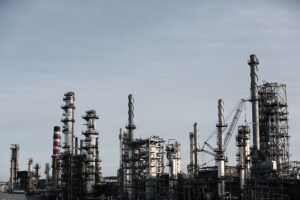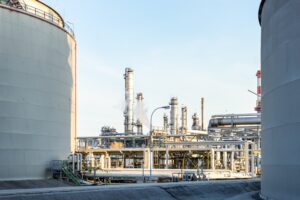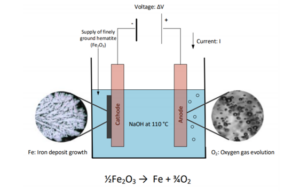West, K.
Publicaties van West, K.
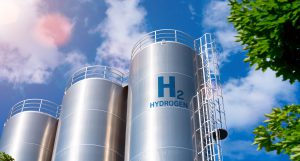
Vraag naar waterstof Noordwest Europese industrie
Er zijn 3 referentiescenario’s aangehouden: De grootschalige inzet van waterstof vraagt in elk scenario enorme kortetermijn-investeringen in nieuwe en duurzame elektriciteitsopwekking, waterstofproductiecapaciteit en infrastructuur voor energietransport en -distributie. Onzekerheden over de niveaus van de industriële productie zorgen voor risico’s voor industriële belanghebbenden en beleidsmakers. De focus in deze analyse ligt op de vraag naar waterstof […]
Lees meer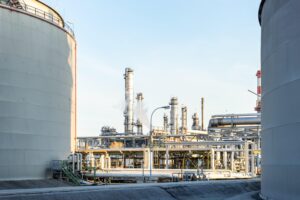
Opties voor industriële decarbonisatie in Nederland (MIDDEN-database)
Over MIDDEN De MIDDEN (Manufacturing Industry Decarbonisation Data Exchange Network) database brengt de huidige productieprocessen van de meeste bedrijven onder EU ETS in kaart en geeft inzicht in de voorwaarden waaronder investeringen in decarbonisatie zullen plaatsvinden. Dit is belangrijke informatie voor bedrijven (sectorinformatie), beleidsmakers en bijvoorbeeld ook banken. Voor elke sector is een rapport gemaakt […]
Lees meer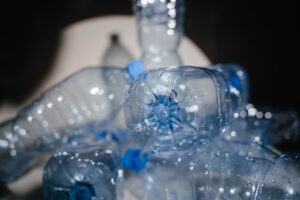
Opties voor decarbonisatie van de Nederlandse PET-flessenindustrie
Indorama Rotterdam Indorama Rotterdam is een petrochemisch bedrijf dat gespecialiseerd is in de productie van PET-pellets (polyethyleentereftalaat) voor flessen en PTA-poeder (gezuiverd tereftalaatzuur). Indorama, gevestigd in het Europoortgedeelte van de haven van Rotterdam, is de grootste producent van bottle-grade PET en PTA in Nederland. Bottle-grade PET wordt gebruikt voor de vervaardiging van verpakkingen (hoofdzakelijk drankflessen). […]
Lees meer
The impact of phasing out woody biomass for heat generation
For this analysis, two scenarios developed by TNO in 2020 were used that describe possible developments for the transition to a sustainable energy system for the Netherlands up to 2050. The scenarios – ADAPT and TRANSFORM – achieve the objective to reduce 49% of greenhouse gas (GHG) emissions by 2030 and a 95% GHG emission […]
Lees meer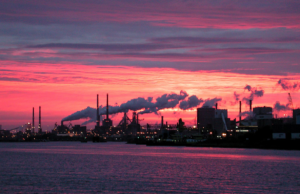
REF BOF steelmaking – greenfield
In the blast furnace, iron ore (in the form of sinter, pellets, and lump ore) and coal (in the form of coke and pulverized coal), and flux (alkaline or “basic” materials, typically burnt lime or dolomite, which react with impurities to form slag that can be separated) are injected into the top of the blast […]
Lees meer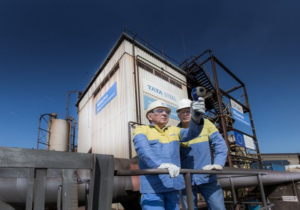
HIsarna
The name is based on a mix of “Hismelt” (the name of the melting vessel) and “Isarna” (the ancient celtic word for iron). Smelting reduction combines elements of the smelting process (extraction of metal from its ore using heat and a reductant) and coal gasification. Iron ore is input without pelletizing or sintering, and is […]
Lees meer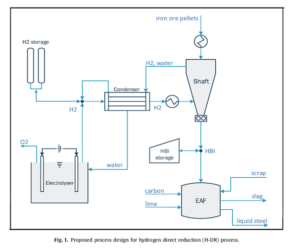
Hydrogen direct reduction steelmaking (HYBRIT) with on-site electrolysis
The reactor produces direct reduced iron (DRI), also called sponge iron, which is a porous, solid iron with low carbon content (below that of pig iron from a blast furnace). It can then be either compacted into hot briquetted iron (HBI, a briquette of DRI compacted at 650 degC to at least 5000kg/cubic meter to […]
Lees meer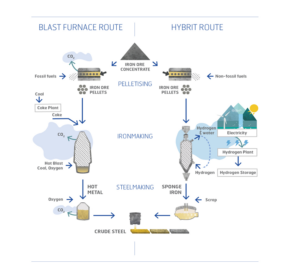
Hydrogen direct reduction steelmaking (HYBRIT) with external hydrogen production
The reactor produces direct reduced iron (DRI), also called sponge iron, which is a porous, solid iron with low carbon content (below that of pig iron from a blast furnace). It can then be either compacted into hot briquetted iron (HBI, a briquette of DRI compacted at 650℃ to at least 5000kg/cubic meter to facilitate […]
Lees meer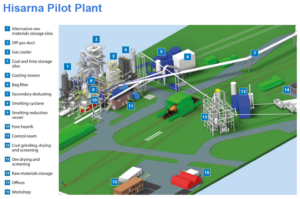
HIsarna with CCS
The name is based on a mix of “Hismelt” (the name of the melting vessel) and “Isarna” (the ancient celtic word for iron). Smelting reduction combines elements of the smelting process (extraction of metal from its ore using heat and a reductant) and direct reduction. Iron ore is input without pelletizing or sintering, and is […]
Lees meer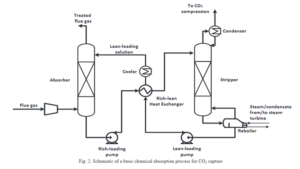
Carbon capture retrofit to REF Basic oxygen furnace steelmaking on coke ovens, hot stoves, lime kilns and steam generation units (60% avoided emissions)
In the blast furnace, iron ore (in the form of sinter, pellets, and lump ore) and coal (in the form of coke and pulverized coal), and flux (alkaline or “basic” materials, typically burnt lime or dolomite, which react with impurities to form slag that can be separated) are injected into the top of the blast […]
Lees meer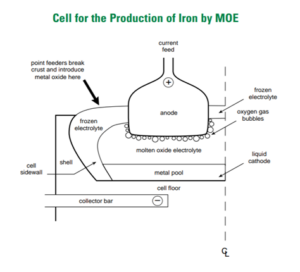
High-temperature molten oxide electrolysis steelmaking (ULCOLYSIS)
The particular technology developed by the ULCOS (ultra-low carbon steelmaking) project is called ULCOLYSIS; researchers at MIT have developed a similar process, now spun out to a company called Boston Metal. Molten oxide electrolysis processes were originally researched in order to allow oxygen production in lunar explorations from metal oxides present on the moon, and […]
Lees meer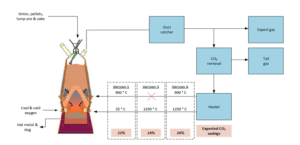
Steelmaking with top gas recycling blast furnace (TGR-BF/ULCOS blast furnace/oxygen blast furnace) with CCS
The basic principles of the steelmaking process with a top gas recycling blast furnace are the same as in the conventional BF-BOF route. In the blast furnace step, iron ore (in the form of sinter, pellets, and lump ore) and coal (in the form of coke and pulverized coal), and flux (alkaline or “basic” materials, […]
Lees meer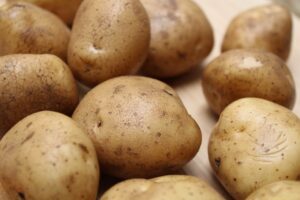
Opties voor decarbonisatie van de Nederlandse aardappelverwerkingsindustrie
De aardappelverwerkingsindustrie in Nederland De Nederlandse aardappelverwerkingsindustrie, een van de grootste ter wereld, produceert ongeveer 2,5 miljoen ton verwerkte aardappelproducten, waaronder een grote verscheidenheid aan producten zoals diepvriesfriet, gekoelde aardappelproducten, aardappelvlokken en chips. Bijna 90% van deze producten wordt geëxporteerd. Er zijn 18 grote locaties in Nederland waar aardappelen worden verwerkt, en 7 grote bedrijven […]
Lees meer